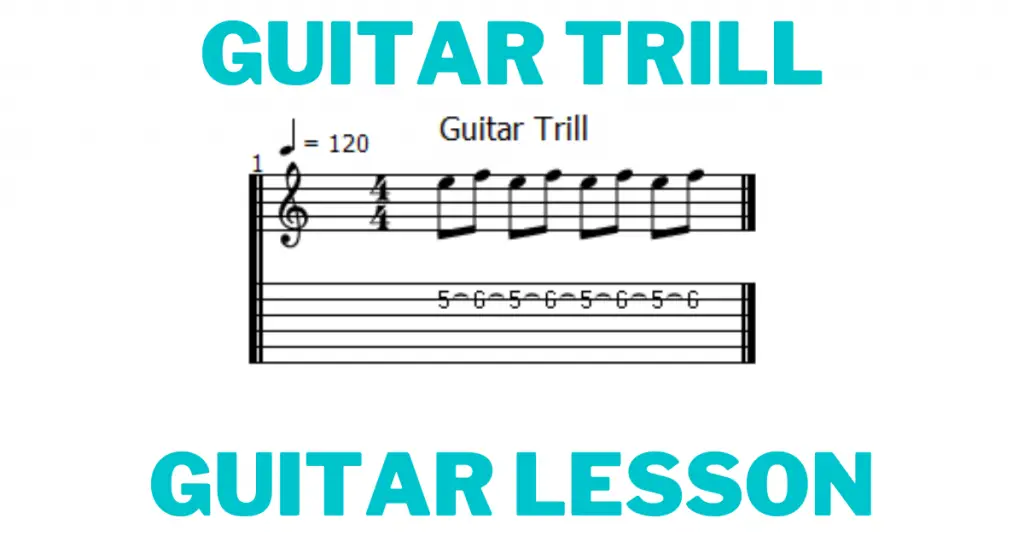What is a guitar trill?
A guitar trill is a rhythmically consistent, rapid alternation between two notes, generally played using a series of hammer-ons and pull-offs.
As a general rule trills are played between notes that are a half step or whole step apart.
How to properly trill
A proper trill is defined as 2 rhythmically even notes, played rapidly, using clear hammer-ons and pull-offs.
The hammer-ons and pull-offs may also be referred to as legato.
How to practice guitar trills
The best way to practice guitar trills is a simple step-by-step process.
- Choose a note on any guitar string
- Place your index finger (finger 1) on that note
- Downpick the note
- Use your middle finger to hammer-on to a note a half step away
- Pull-off to your initial note
- Continue to hammer-on and pull-off
Guitar trill example
This is a simple example, but that’s all you need!

My favorite trill is in the second riff, called the “Theme” riff, of The Trooper by Iron Maiden. Here’s the tab.
Trilling on an acoustic guitar
The ability to trill on an acoustic guitar, or any guitar, is determined by the string height, the trill location, and the string gauge.
You generally won’t be able to trill on the lower frets, such as frets 1-3, but you can trill anywhere else on the fretboard on an acoustic, nylon, or electric guitar.
Long story short, it all depends on the setup and quality of the guitar.
What fingers are best for guitar trills?
The best fingers for a guitar trill are fingers 1 and 2, or fingers 1 and 3.
What’s next?
Now that you’ve learning guitar trills you can move onto new techniques and concepts!
10 Fundamental Metal Guitar Techniques
Top 5 Right Hand Technique Fundamentals
Sweep Picking Technique: Definition and How To Sweep
11 Essential Lead Guitar Techniques
If none of these interest you, feel free to click the search bar and find look for whatever you may want.
Thanks for reading, and leave a comment below with any questions you may have.



